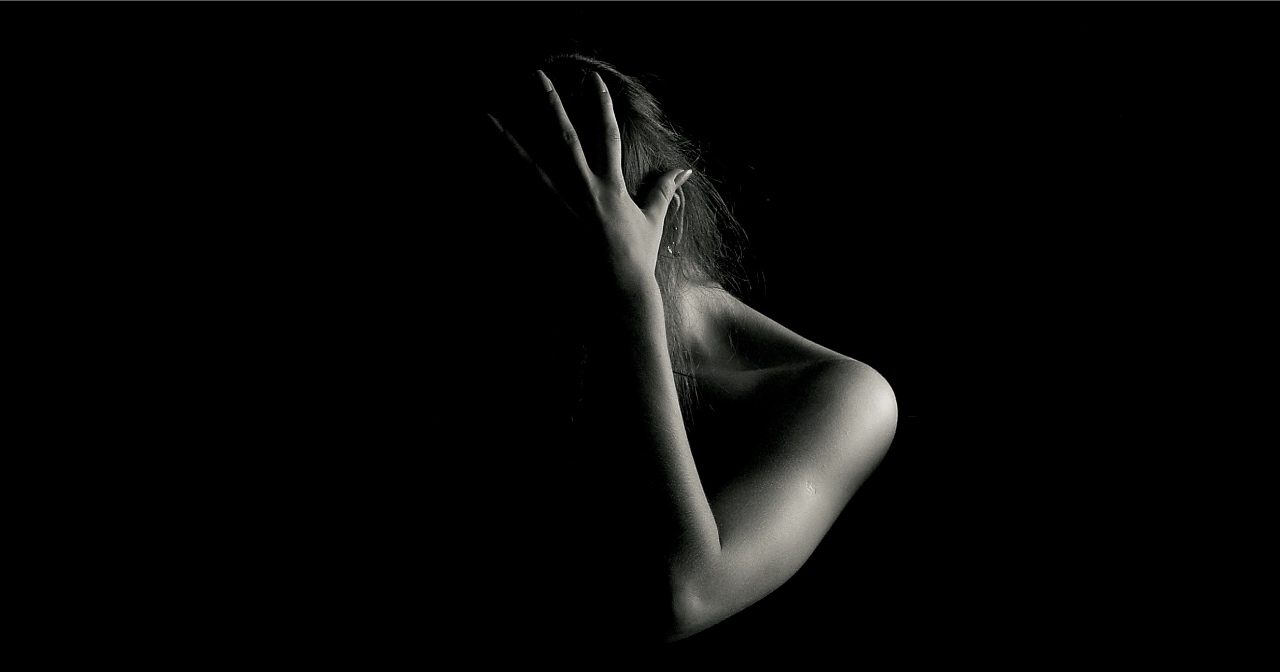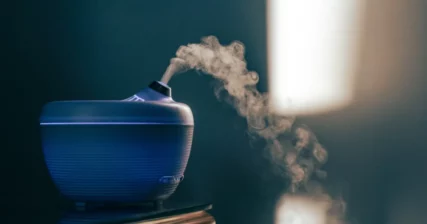Listen on: Apple Podcasts | Spotify
With almost half of the population experiencing a headache each year, it’s not surprising that the question “What essential oils help with headaches?” ranks near the top of essential oil-related Google searches.
Migraine headaches occur in one out of five women and one out of ten men. Most migraine sufferers are over the age of 40.
Though numerous treatments exist, many have side effects, which often leads people to searching for natural solutions.
Headache relief is one of the many benefits of essential oils. Though people often use them topically to relax neck and head tension that leads to headaches, research shows that inhaling some essential oils may also provide direct relief as well.
In this article, I’ll outline the essential oils that help with headaches based on current research.
1. Peppermint
Peppermint is a rich source of menthol, which is a muscle-relaxing and pain-killing compound. Isolated menthol is often sold as an over-the-counter pain-relieving medication.
Research shows that applying peppermint oil topically around the head and temple reduces headache strength. Interestingly, inhaling it has also been shown to relieve migraine headaches.
In a double-blind, parallel, randomized controlled trial comparing inhaled lidocaine against inhaled peppermint essential oil, peppermint oil relieved migraines as well as inhaled lidocaine.
2. Lavender
Those who regularly use essential oils know that “when you’re not sure which oil to use, choose lavender.” Whether it’s because it has been studied so much, or that it just has a multitude of health-promoting compounds, research supports the use of lavender for numerous conditions, including headaches.
Two lavender compounds, linalool and linalyl acetate may be the reason lavender is effective for headaches. Linalool acts as a sedative and linalyl acetate acts as a mild narcotic.
In a placebo-controlled trial, 92 of 129 headache sufferers responded completely or partially to 15 minutes of inhaling lavender essential oil, whereas 32 of 68 responded to the placebo.
As the study conclusion stated:
The present study suggests that inhalation of lavender essential oil may be an effective and safe treatment modality in acute management of migraine headaches.
Sasannejad P, et al.
3. Chamomile
Traditional Persian Medicine practitioners have used topical chamomile essential oil for generations to relieve migraine headaches. Historically, they diluted it with sesame oil and then applied it to the scalp, or had patients do so on their own.
According to one paper, the chamomile compounds that may relieve headaches include:
- chamazulene and apigenin
- chamomile flavonoids
- chamomile polyphenols
- chamomile, and
- sesamine which would be found in the sesame oil
Though I haven’t yet seen placebo-controlled trials to prove its efficacy, its historical use in Persian Medicine shows it most likely has a positive effect.
Research also shows chamomile may relieve depressive symptoms, which lead to headaches, and so may indirectly reduce occurrence of headaches as well.
4. Rosemary
Like chamomile, rosemary has a long history of use in traditional medicine, including for migraine headaches.
Many of rosemary’s essential oil constituents act on the nervous system, which may be why it’s worked so well in traditional medicine.
5. Cannabis / CBD Oil
While it isn’t necessarily an “essential oil,” CBD oil or broad-spectrum hemp oil, taken internally or used topically may significantly relieve headaches, including migraines.
Even better, you might consider a blend of hemp or CBD oil with other essential oils.
What works for one…
Natural therapies that work for one person rarely work for everyone, which is why I always recommend continuing to experiment with different options until you find the one that works for you.
In some cases, a headache isn’t even about your head, but is the result of significant tension in your neck and upper back. For example, the day after doing shrugs or other heavy shoulder work, I often experience a headache. In those cases, the tips I shared in my article on delayed onset muscle soreness (DOMS) will probably work better than the choices above.
That said, sometimes a natural option just won’t cut it, and you’re better off taking an NSAID or other medication, rather than suffering through the pain of a migraine or other type of headache.
Even then, some migraine sufferers need to work with their doctors to find the right medication that provides enough relief to carry on in spite of their migraines.

Feel Better Fast. Guaranteed.
Energy+, EDGE, and MentaBiotics make up the Happy Juice supplement stack, with ingredients clinically proven to:
- decrease anxiousness scores by 55%
- decrease irritability scores by 60%
- decrease fatigue by 64%
- decrease anger 54%
- decrease tension by 45%
- decrease confusion by 43%
- decrease overall distress by 49%
- increase good bacteria by 70%
- decrease negative mood by 105%
- increase positive mood by 211%
References
Amsterdam, Jay D., et al. “Chamomile (Matricaria Recutita) May Have Antidepressant Activity in Anxious Depressed Humans – An Exploratory Study.” Alternative Therapies in Health and Medicine, vol. 18, no. 5, 2012, pp. 44–49.
Cuttler, Carrie, et al. “Short- and Long-Term Effects of Cannabis on Headache and Migraine.” The Journal of Pain, vol. 21, no. 5–6, June 2020, pp. 722–30. PubMed, doi:10.1016/j.jpain.2019.11.001.
Essential Oils Used in Aromatherapy: A Systemic Review – ScienceDirect. https://www.sciencedirect.com/science/article/pii/S2221169115001033#bib61. Accessed 27 July 2021.
Ghasemzadeh Rahbardar, Mahboobeh, and Hossein Hosseinzadeh. “Therapeutic Effects of Rosemary (Rosmarinus Officinalis L.) and Its Active Constituents on Nervous System Disorders.” Iranian Journal of Basic Medical Sciences, vol. 23, no. 9, Sept. 2020, pp. 1100–12. PubMed Central, doi:10.22038/ijbms.2020.45269.10541.
Manzoni, Gian Camillo, and Lars Jacob Stovner. “Epidemiology of Headache.” Handbook of Clinical Neurology, vol. 97, 2010, pp. 3–22. PubMed, doi:10.1016/S0072-9752(10)97001-2.
Rafieian-Kopaei, Mahmood, et al. “Comparing the Effect of Intranasal Lidocaine 4% with Peppermint Essential Oil Drop 1.5% on Migraine Attacks: A Double-Blind Clinical Trial.” International Journal of Preventive Medicine, vol. 10, 2019, p. 121. PubMed, doi:10.4103/ijpvm.IJPVM_530_17.
Sasannejad, Payam, et al. “Lavender Essential Oil in the Treatment of Migraine Headache: A Placebo-Controlled Clinical Trial.” European Neurology, vol. 67, no. 5, 2012, pp. 288–91. PubMed, doi:10.1159/000335249.
Zargaran, Arman, et al. “Potential Effect and Mechanism of Action of Topical Chamomile (Matricaria Chammomila L.) Oil on Migraine Headache: A Medical Hypothesis.” Medical Hypotheses, vol. 83, no. 5, Nov. 2014, pp. 566–69. PubMed, doi:10.1016/j.mehy.2014.08.023.
Photo by Alexander Krivitskiy on Unsplash



